Plas Tan y Bwlch is the Snowdonia National Park environmental studies center. They run a series of public and professional courses from this base, near to the village of Maentwrog. The gardens are mainly based on a steep hillside. The path takes you quite gently up past a series of stopping points where the leaflet explains items of interest. This works rather well. There are other steeper paths and I think it could take a few hours to do the whole area. On this our first visit we stuck to the path, but with a mental note that we will return.
 You quickly realize as you walk around the grounds that the area is quite sheltered. The gardens were planted up mainly in the 1880s for William Oakeley who made his fortune from the nearby slate mines.
You quickly realize as you walk around the grounds that the area is quite sheltered. The gardens were planted up mainly in the 1880s for William Oakeley who made his fortune from the nearby slate mines. 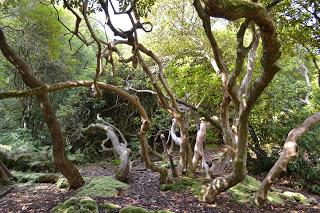 I was reminded of Y Gwyllt in places, it is of a similar age and had many similar plants.
I was reminded of Y Gwyllt in places, it is of a similar age and had many similar plants. There was evidence of the serious damage the storm in February 2014 had caused.
There was evidence of the serious damage the storm in February 2014 had caused. Enormous trees were still lying felled by the winds. The Japanese Garden had been more or less obliterated and large areas of space were opened up. This is both sad and an exciting opportunity at the same time.
Enormous trees were still lying felled by the winds. The Japanese Garden had been more or less obliterated and large areas of space were opened up. This is both sad and an exciting opportunity at the same time.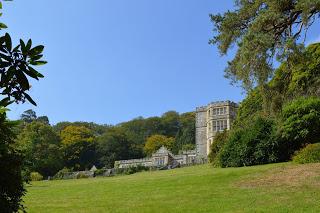 The house itself is placed high on the bank so that it has views down across the garden and the Dwyryd valley.
The house itself is placed high on the bank so that it has views down across the garden and the Dwyryd valley.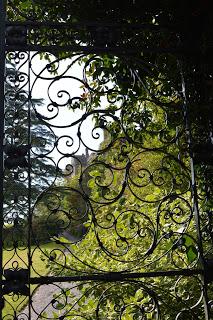 There are some very nice iron gates around the property.
There are some very nice iron gates around the property.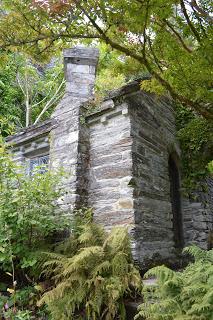 A solid looking gardeners' bothy,
A solid looking gardeners' bothy,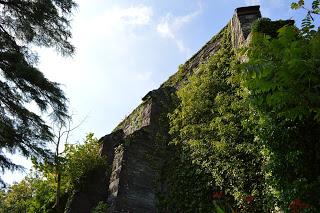 and the most amazing retaining walls holding the house up above the garden,
and the most amazing retaining walls holding the house up above the garden,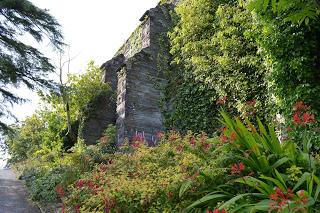 with a well planted long border along the base of the wall.
with a well planted long border along the base of the wall. From the top of the wall you get amazing views down the garden.
From the top of the wall you get amazing views down the garden. This is the pond, it is a little overgrown at the moment, but I am not able to cast the first stone on this at all.
This is the pond, it is a little overgrown at the moment, but I am not able to cast the first stone on this at all.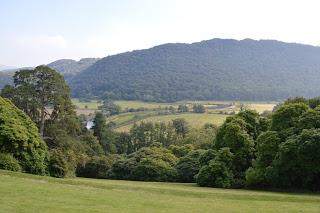 We loved this view that shows the River Dwyryd, which may have been altered on the orders of Oakeley to make it meander in a more picturesque way. Apparently in the hillside opposite he has his initials picked out in different species of trees. You cannot see from this photograph, but it is thought you can still see the O and, I have to say, we thought we could see this. I just love the ability to be able to point vaguely at a hill and demand that your initials are planted into it. We mused as we drank tea and ate our cake, that this would be similar to a premiership footballer maybe, or a very rich pop star/celebrity (insert the name of whoever you wish into this).
We loved this view that shows the River Dwyryd, which may have been altered on the orders of Oakeley to make it meander in a more picturesque way. Apparently in the hillside opposite he has his initials picked out in different species of trees. You cannot see from this photograph, but it is thought you can still see the O and, I have to say, we thought we could see this. I just love the ability to be able to point vaguely at a hill and demand that your initials are planted into it. We mused as we drank tea and ate our cake, that this would be similar to a premiership footballer maybe, or a very rich pop star/celebrity (insert the name of whoever you wish into this). There is a caged fernery in the ruins of what they believe was an old ice house.
There is a caged fernery in the ruins of what they believe was an old ice house.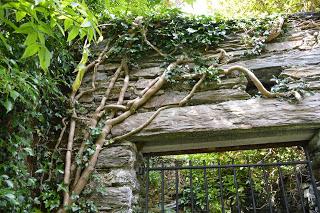 I loved the shape of the ivy stems growing into the building.
I loved the shape of the ivy stems growing into the building. 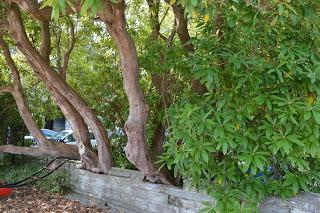 I like that the walls have had to give in to the ancient rhododendrons.
I like that the walls have had to give in to the ancient rhododendrons.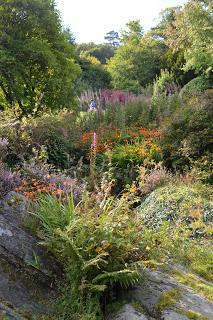 The ground is very rocky and these rocks are used to great planting effect.
The ground is very rocky and these rocks are used to great planting effect.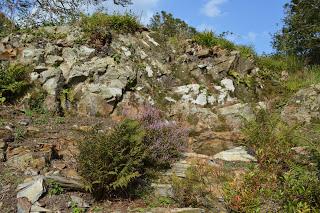 We admired the beautiful trees like this Catalpa,
We admired the beautiful trees like this Catalpa,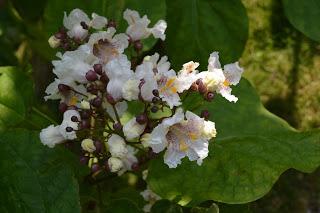 and this Magnolia grandiflora
and this Magnolia grandiflora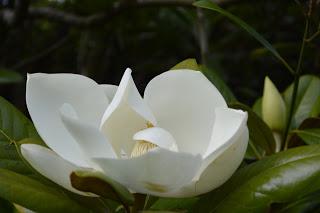 The twisted trunk on this tree was just wonderful.
The twisted trunk on this tree was just wonderful.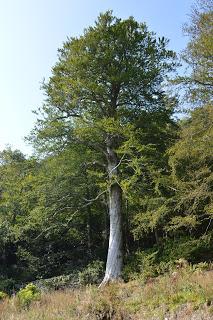 Where the storm has cleared areas there are signs of new plants enjoying the sudden light.
Where the storm has cleared areas there are signs of new plants enjoying the sudden light. and signs of life returning as many of the huge stumps had new growth already showing.
and signs of life returning as many of the huge stumps had new growth already showing.Like most postponed visits, I now wonder why I was so foolish to leave it so long. I think I will be returning soon.

